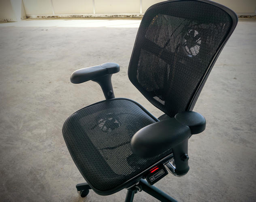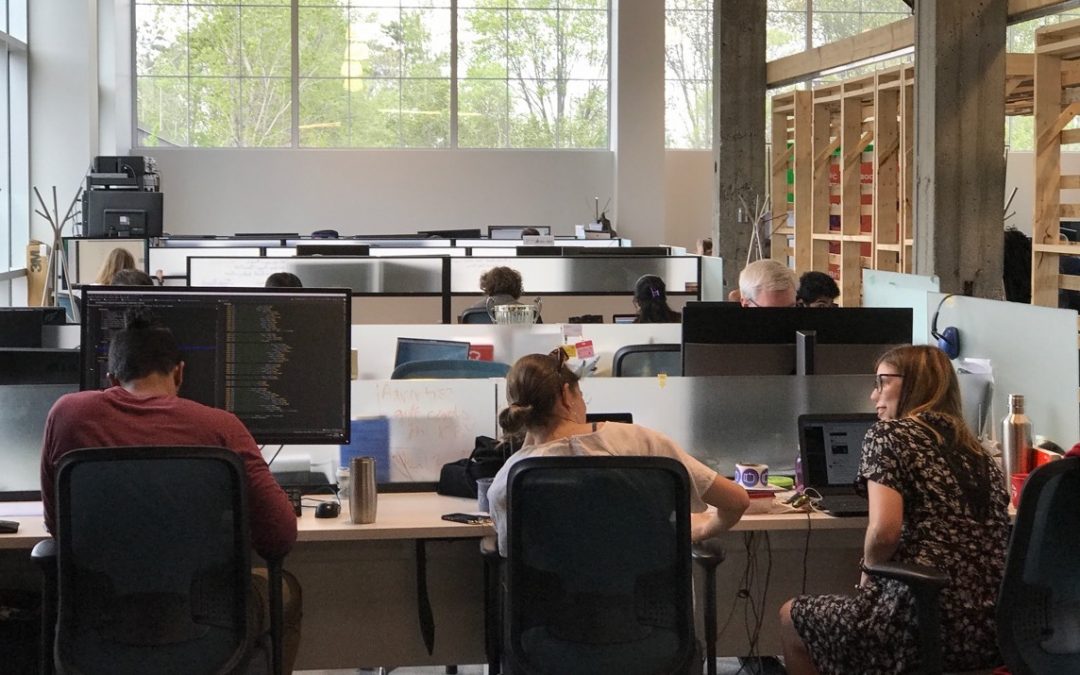In an office setting, increasing occupant comfort can provide a significant increase in occupant performance. Below is a list of six things that can be done to improve comfort and productivity in an office building.
- Have a comfortable air temperature. Usually this falls between 21°C and 24°C for winter and 24°C and 27°C for summer. Maintain a comfortable humidity as well; 30-50% relative humidity is ideal. Keep air temperatures steady, too much fluctuation and people won’t be able to adapt their clothing to their own personal comfort. Make sure the air temperature at the floor level isn’t too cold.
- Have a comfortable radiant temperature. Typically you would want the radiant surface temperatures to be close to the air temperature. Make sure your exterior surfaces are well insulated so that none of them are getting too hot or too cold due to outdoor conditions. Cold walls, cold floors, and warm ceilings have been found to cause the most discomfort. Windows can be a big culprit in this case, so place people slightly away from windows so that they are not feeling a high amount of radiant cooling. Smaller, or better insulated windows will also help reduce uncomfortable radiant cooling. If you are going to use radiant heating, place it on the floor or a lower portion of the wall, not on the ceiling. If you are going to have radiant cooling, chilled beams or chilled ceiling panels are the best options.
- Eliminate cool drafts. Keep your building well sealed. An air flow velocity below 0.15 m/s for cooler air is required by ASHRAE 55. Due to their low R-value, windows can cause drafts even if they are well sealed, which is another reason to move people slightly away from windows. Again, smaller or better insulated windows will help reduce discomfort due to cool drafts. Also, make sure the HVAC system is not blowing cold air on people. However, you don’t have to worry about fast moving warm air. It has been found that people are much more tolerant to fast moving warm air than to fast moving cool air.
- Allow the occupants to control their own temperature and/or air speed. Some like it warmer, and some like it cooler. Giving occupants control over their temperature and air speed allows a system to respond to variations in individual comfort. Individual control also increases perceived comfort. This means that that even if conditions stay the same, occupants feel more comfortable knowing they have control over the indoor conditions. As an example, Rocky Mountain Institute’s Innovation Center uses heating and cooling Hyperchairs in order to provide individual comfort control (see photo).
- Increase the outdoor air ventilation rate. For outdoor air rates between 14 to 30 CFM/person there is approximately a 0.8% productivity increase per 10 CFM/person increase. ASHRAE 62.1 specifies an OA of about 17 CFM/person, so raising that to 30 CFM/person results in about a 1% increase in productivity.
- Eliminate volatile organic compounds (VOCs). The presence of VOCs have been shown to reduce productivity by 4%. This is a significant performance reduction, so VOCs are something that really should be avoided. Thankfully, there are a lot of options for low-VOC materials these days.

Just to give an example of the cost benefit, let’s take the impacts of ASHRAE 55, which specifies thermal comfort requirements. I estimate that a building that meets ASHRAE 55 would have a 4% increase in productivity compared to a typical building. If you have a 100 person office, that is about a $400,000 annual gain in productivity. Numbers like these typically far outweigh the energy cost savings from energy saving measures. So, when trying to justify energy saving measures it can be helpful to include the productivity benefits. Because, for the most part, a greener office is also a more productive office. These recommendations are based on ASHRAE Fundamentals, ASHRAE 55, and LBNL’s Human Performance research.

